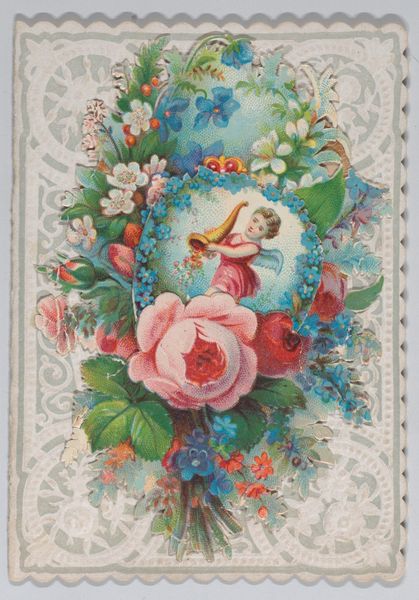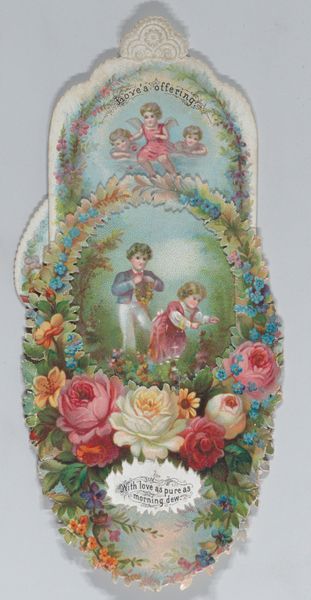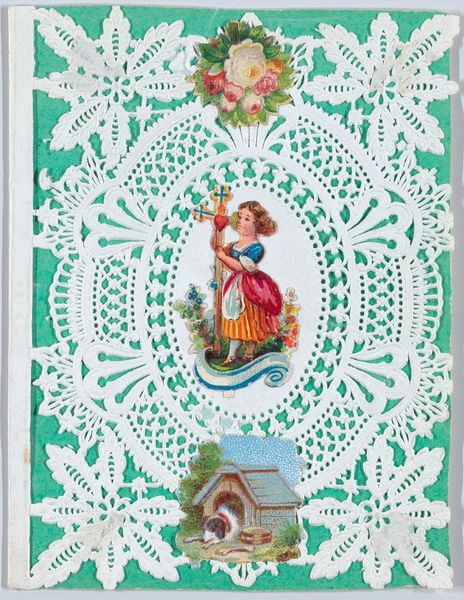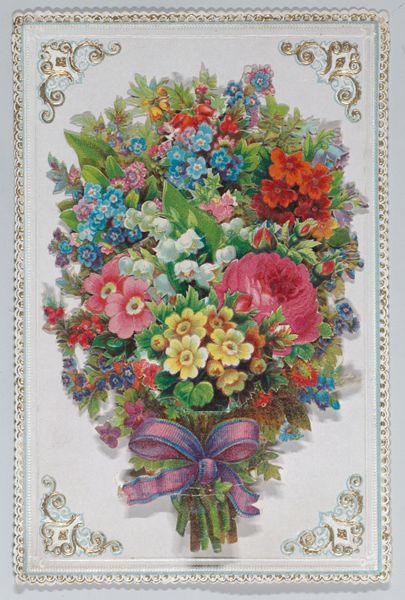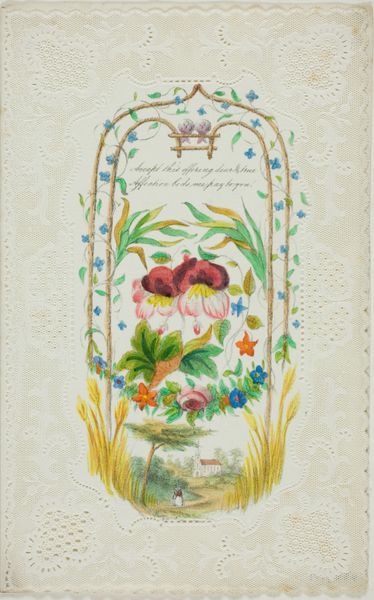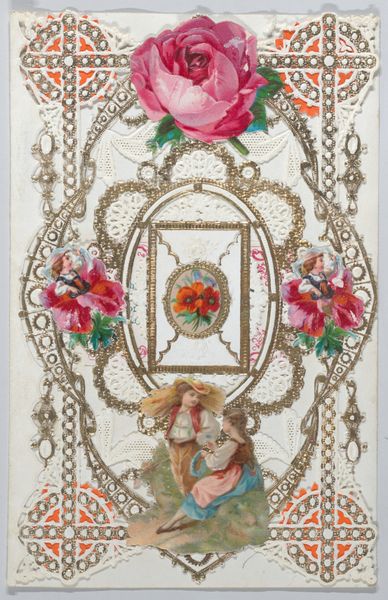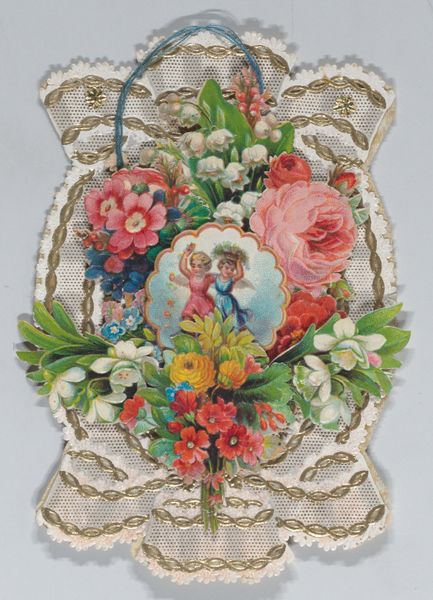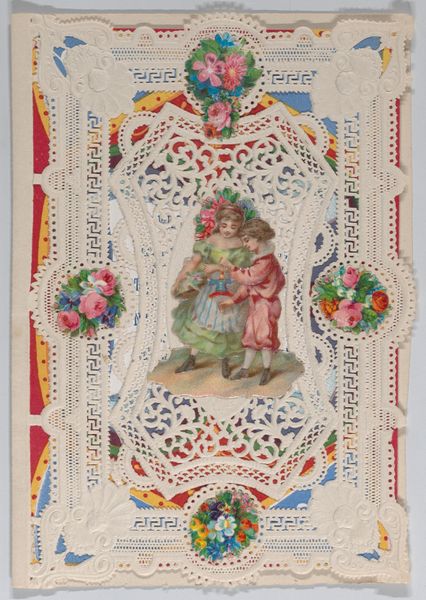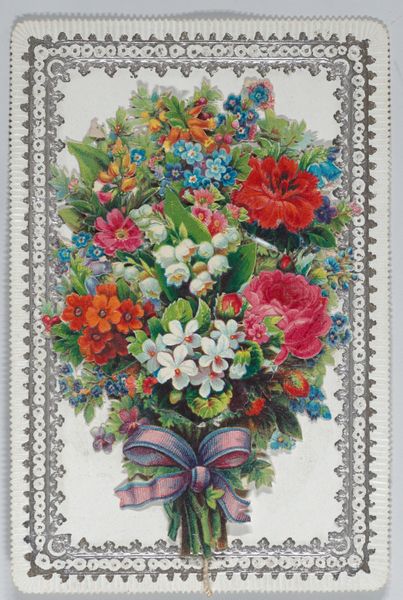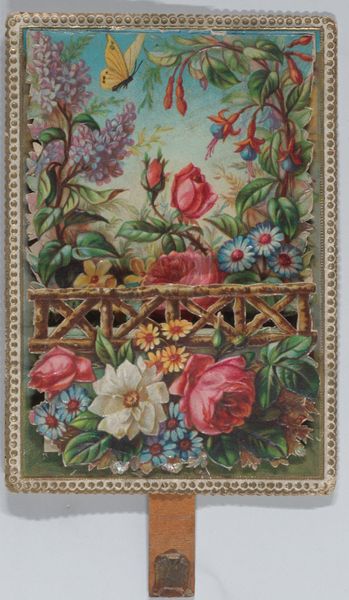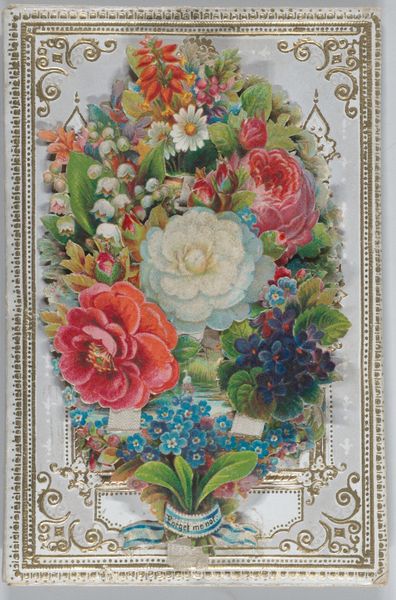
Valentine - Mechanical, four ovals, flaps, images 1870 - 1880
0:00
0:00
Dimensions: Width: 3 1/16 in. (7.7 cm) Length: 4 5/16 in. (11 cm)
Copyright: Public Domain
Curator: This charming piece, dating from the 1870s to 1880s, is titled "Valentine - Mechanical, four ovals, flaps, images." It is currently housed here at the Met. Editor: It's such a beautiful card; ornate and fragile. The whole thing breathes Victorian sentimentality. Do you agree? Curator: Absolutely. Its structure is carefully considered; four distinct vignettes each framed within an oval shape, each with potential symbolic import. Each evokes love through allegory, in the era when it was produced, but the message seems diluted to us now. Editor: Can we dive into those ovals? I see a young woman, perhaps dancing or gliding? Above and across from her is a child who looks to be stoking fire—or watching over some altar flame—but what could be meant? It seems odd, even to one who, in 2024, finds ritualistic traditions somewhat removed from mainstream culture. Curator: Precisely. Fire could easily reference purification rituals; but it also serves as symbol for passions and trials of true love. Then in another vignette is the boy busy with the earth and new beginnings, representing hopes for future growth. Editor: Right, and that last image includes a child suspended between doves as if raised by those symbolic carriers themselves! Let’s remember what that signals politically at the time—a world dominated by social structures and rigid class structures, and the idea that freedom or even ascension to a higher plane would be unattainable. Is that a fair assessment, even for romantic illustration? Curator: Your reading is quite thought-provoking! The images become a cultural record of yearning within these gilded frames. Also notice that each cherubic figure is gendered, implying the rigid confines that dictated societal expectations even when addressing the open field of “love.” Editor: It’s definitely a rich historical record; one that provides a small window into Victorian values and expectations regarding romance, religion and even status. Looking at the "Forget me not" inscribed ribbon between the flowers is quite telling as an overarching idea for that time, knowing that its promise will fall on deaf ears to all but the wealthy and established members of the period! Curator: That ribbon beautifully encapsulates the piece's dual function – it reminds the receiver of enduring affections and preserves fragments of its time; of romanticism and the promise for everlasting life together. It captures the continuity that human beings, regardless of gender or socioeconomic circumstances, seek out from birth until death.
Comments
No comments
Be the first to comment and join the conversation on the ultimate creative platform.
